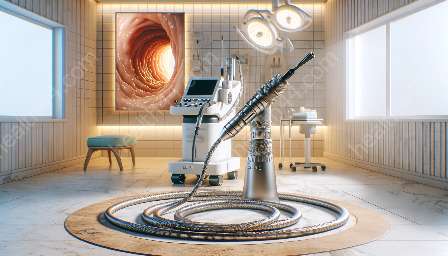Neuroendoscopes have revolutionized the field of medical imaging and treatment, offering unparalleled precision and minimally invasive procedures. They are closely related to endoscopes and play a significant role in the advancement of medical devices and equipment. Let's delve into the fascinating world of neuroendoscopes and explore their compatibility with other medical tools.
The Evolution of Neuroendoscopes
Neuroendoscopes are specialized instruments used for visualizing and treating the brain, spinal cord, and related structures. They have undergone remarkable advancements in recent years, allowing medical professionals to perform complex procedures with greater accuracy and safety. Neuroendoscopes are compatible with various endoscopes and are a crucial part of the medical devices and equipment landscape.
Enhanced Visualization and Precision
Neuroendoscopes provide high-definition imaging capabilities, enabling physicians to navigate intricate brain and spinal structures with unparalleled clarity. This advanced visualization is key to diagnosing and treating conditions such as tumors, hydrocephalus, and vascular malformations. With their compatibility with endoscopes, neuroendoscopes have significantly expanded the scope of minimally invasive surgeries, leading to faster recovery times and better patient outcomes.
Integration with Medical Devices and Equipment
Neuroendoscopes are designed to seamlessly integrate with various medical devices and equipment, facilitating intricate procedures with precision and efficiency. Their compatibility with state-of-the-art imaging systems, surgical tools, and navigation technology enhances the overall surgical experience for both surgeons and patients.
Advantages of Neuroendoscopes
- Minimally Invasive: Neuroendoscopes enable minimally invasive procedures, reducing trauma to surrounding tissues and accelerating recovery.
- Precision and Safety: With their advanced imaging capabilities and compatibility with endoscopes, neuroendoscopes offer precise navigation and enhanced safety during delicate neurosurgical procedures.
- Expanded Treatment Options: Neuroendoscopes have expanded the range of conditions that can be effectively treated using minimally invasive techniques, offering new hope for patients with complex neurological disorders.
- Compatibility with Endoscopes: Neuroendoscopes complement the capabilities of traditional endoscopes, creating a comprehensive toolkit for medical professionals.
The Future of Neuroendoscopes
As technology continues to advance, neuroendoscopes are expected to become even more sophisticated, providing enhanced visualization, navigational capabilities, and treatment modalities. Their seamless compatibility with endoscopes, medical devices, and equipment will further enrich the landscape of neurosurgical interventions, ultimately benefiting patients and healthcare providers alike.
In Conclusion
Neuroendoscopes represent a significant breakthrough in neurosurgery, offering advanced imaging and treatment capabilities that are compatible with endoscopes and various medical devices and equipment. Their role in minimally invasive procedures and the treatment of complex neurological conditions continues to evolve, promising new avenues for improving patient care and outcomes.


